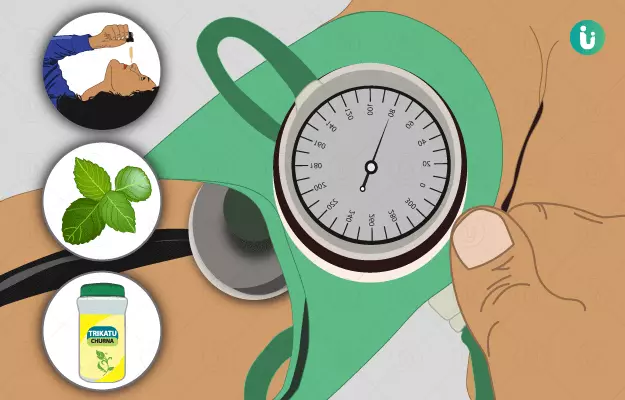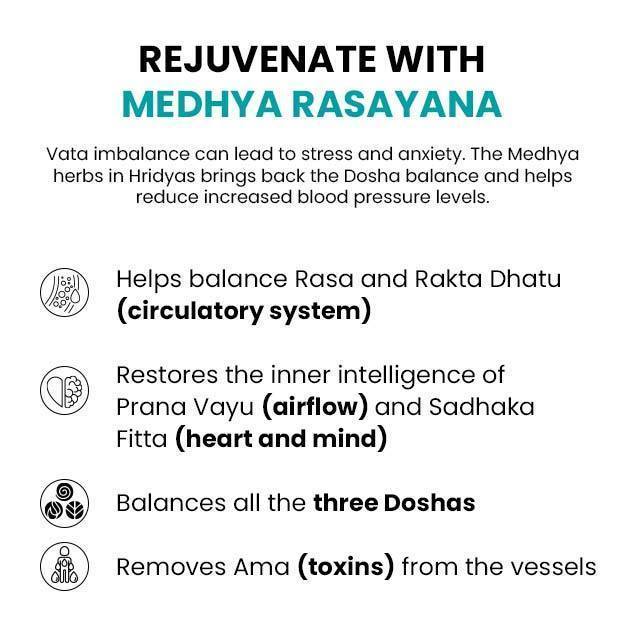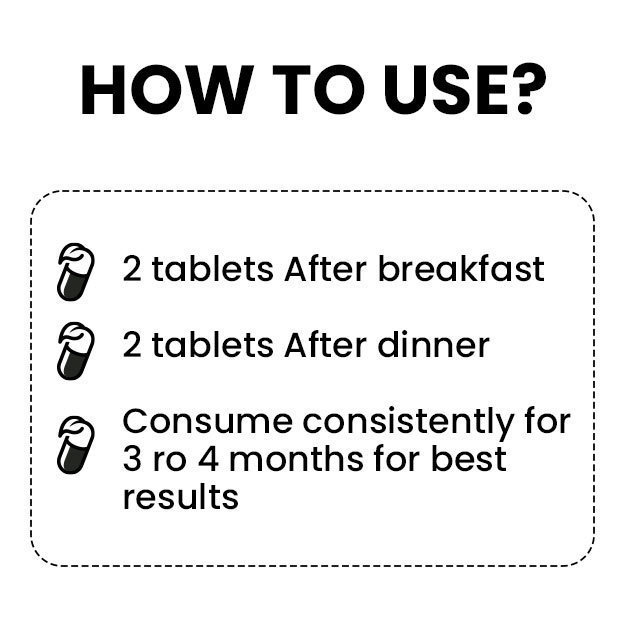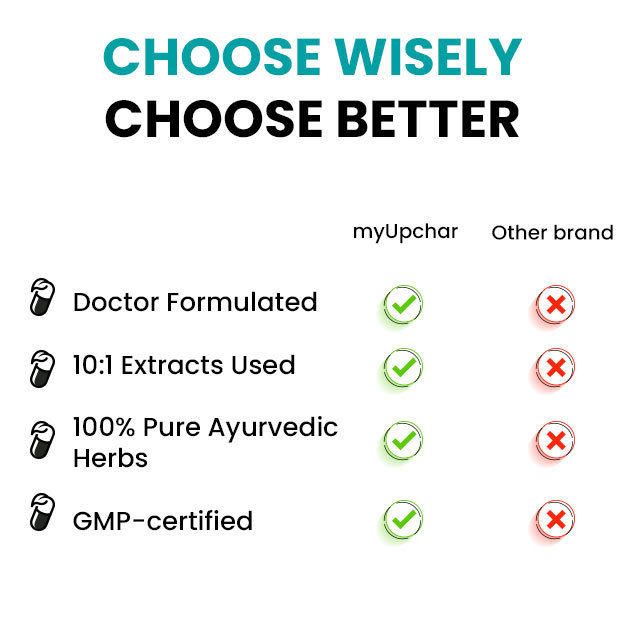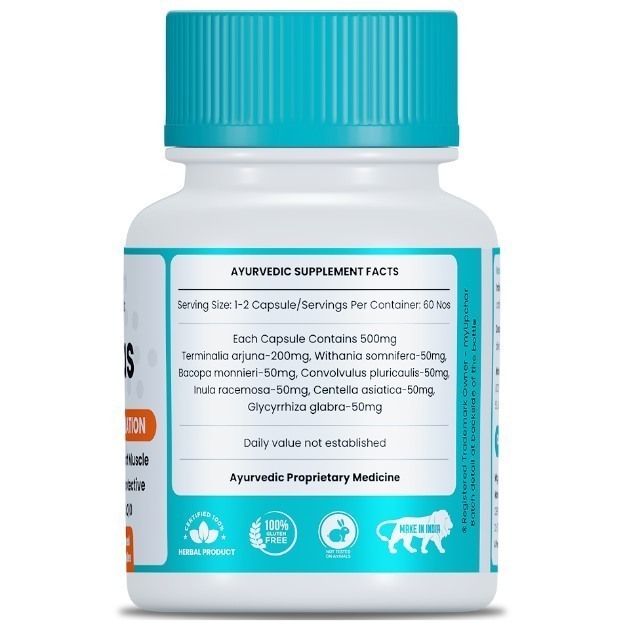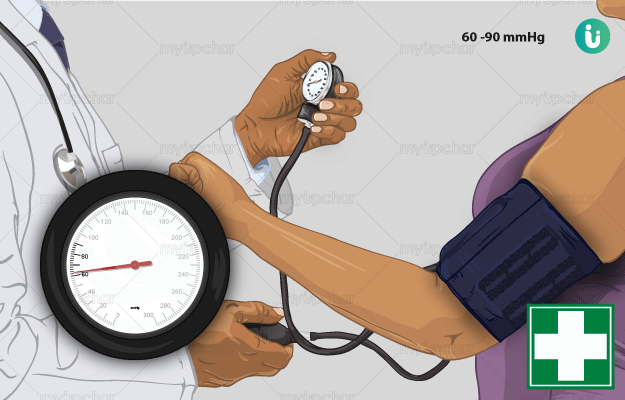Low blood pressure, also called hypotension, is a condition in which the blood pressure of an individual is lower than the normal value. The normal levels of blood pressure are 120/80 mmHg. Blood pressure less than 90/60 mmHg is considered to be hypotension. Low blood pressure does not lead to any complications in a majority of individuals; however, if there is a sudden and drastic fall in the blood pressure with symptoms such as dizziness and fainting, a doctor must be immediately consulted as it may lead to shock. The doctor may suggest keeping the body hydrated by increasing the intake of water, increasing the consumption of salt in the diet, avoiding alcohol and caffeine, and wearing compression stockings.
According to Ayurveda, vata (air) is the primary causative factor for low blood pressure, although pitta and kapha are also indirectly responsible. Conditions that are caused due to pitta and kapha imbalance and which are responsible for low blood pressure are anaemia and debility.
Ayurvedic treatments recommended for low blood pressure are sarvanga ksheeradhara (pouring of oil over the body), pizhichil (oil massage), shodhana karmas (purification therapy), abhyanga (massage) and swedana (sweat therapy). The Ayurvedic herbs and medicines that are useful in treating and managing low blood pressure are arjuna, tulsi (holy basil), rasonam (garlic), manjishtha (Indian madder), trikatu (three acrids), and makaradhwaja ras.
- Ayurvedic view of low blood pressure
- Ayurvedic treatment for low blood pressure
- Ayurvedic herbs and medicines for low blood pressure
- Dietary and lifestyle changes for low blood pressure as per ayurveda
- How effective are ayurvedic medicines and treatments for low blood pressure
- Side effects and risks of ayurvedic medicine and treatments for low blood pressure
- Takeaway
Ayurvedic view of low blood pressure
Hypotension is a vata disorder with vitiation of rasa dhatu and oja, the development of which usually occurs through debility, malnourishment, anaemia, and other chronic diseases. It can also be caused due to poor blood circulation. According to Ayurveda, the major symptoms of low blood pressure, are angamarda (body pain), gauravta (heaviness in the body), tandra (sleepiness), tama (blackout), daurbalya (weakness), and vibheti (fear). Hypovolemia or reduced blood volume is one of the common causes of low blood pressure. The vitiated vata dosha affects oja and rasa dhatu, leading to the reduced production and quality of rasa dhatu and rakta dhatu, which in turn leads to hypovolemia.
The various Ayurvedic therapies that can be used for resolving hypotension are herbs that strengthen your heart and dhatus, such as arjuna, garlic, cardamom, pippali (long pepper), and turmeric.
Ayurvedic treatment for low blood pressure
Low blood pressure can be treated with the following procedures as per Ayurveda.
- Sarvanga ksheeradhara and pizhichil
- Shirodhara is an Ayurvedic treatment in which various liquids such as milk or oils mixed with a decoction of herbs are poured over the head in a rhythmic manner. Sarvanga ksheeradhara, also known as an oil bath, is the application of a suitable oil on the head and the whole body.
- Pizhichil is an Ayurvedic therapy, which involves the application and massaging of lukewarm herbal oil all over the body rhythmically by two trained therapists. This massage can be done in both the lying down and sitting positions in a chair specially made for this purpose. Pizhichil should be done for about 10 days to experience an optimum healing experience.
- Shodhana karmas
The following shodhana karmas can be used to treat hypotension:
- Nasya karma: Drops of medicated oil are instilled in the nasal passage (considered to be the path to the brain and consciousness), which clears a blocked nose and lubricates the nasal passage. The oils used in nasya karma are in combination with various herbs that help in clearing the nasal passage and sinuses.
- Basti karma: Basti is an ayurvedic term used for enema. It is useful in cleaning the accumulated toxins from tridoshas, vata, pitta and kapha. The decoction or oil for basti is infused with the properties of various medicinal herbs and unlike the enemas of modern days, it is prepared fresh just before use. This therapy is generally given for a period of 8 to 30 days. Duration of the therapy may vary depending on the condition of the individual.
- Abhyanga and swedana
- Abhyanga (massage) is of two types, marma (energy points) abhyanga and shiro (head) abhyanga, both of which can be performed in individuals of all ages.
- Marma abhyanga is a massage done at specific marma points of the body to stimulate the marmas and correct the flow of energy. The duration of this abhyanga is 60 to 90 minutes.
- Shiro abhyanga is of a shorter duration, taking about half an hour. It involves a gentle and firm massage of the head, neck, and shoulders, leading to an improvement in blood circulation in the head. It focuses primarily on the marma points, thus refreshing the five senses.
- Swedana is of different types, two of which are used for low blood pressure, navarakizhi and elakizhi.
- Navarakizhi, also known as shashtik shali pinda sweda, involves massage therapy using a poultice. A special type of rice is cooked in milk and a decoction of various herbs. It is then tied into a poultice and used to give massage strokes to the body by dipping the poultice in milk and herbal decoction. The layer of milk that gets accumulated on the body is scraped off after the therapy, which is followed by a shower. The duration of this swedana is 30 to 40 minutes.
- Elakizhi, also known as patra pinda sweda, uses medicated leaves for the therapy. The leaves are chopped and tied into a poultice along with other herbs. These poultices are then placed in a container with medicated oil and heated. Before beginning with swedana, an abhyanga is given for about 15 minutes. Fomentation with these warm poultices is done for about 30 to 40 minutes in swedana. The individual is allowed to rest for 15 minutes after the completion of the procedure.
- Abhyanga (massage) is of two types, marma (energy points) abhyanga and shiro (head) abhyanga, both of which can be performed in individuals of all ages.
Ayurvedic herbs and medicines for low blood pressure
Ayurvedic Herbs for Low Blood Pressure
- Arjuna
- Arjuna is a cardioprotective agent that is being used in Ayurvedic medicine since the Vedic times and has been specified for use in many conditions by medical texts like Charaka Samhita, Sushruta Samhita, and Astanga Hridayam. Being a cardiotonic that helps maintain blood pressure in the normal range, it is used for both hypertension and hypotension.
- The dose and frequency of this herb and the duration of the treatment will vary depending on the individual’s condition. You can take 500 mg of arjuna bark powder thrice a day or as directed by the physician.
- Nausea, gastritis, headache and body ache, constipation, and insomnia are the commonly observed side effects of arjuna.
- Tulsi
- Tulsi, also called holy basil, has a therapeutic effect on various conditions. It is found throughout India and in other parts of the world.
- For low blood pressure, tulsi juice mixed with a teaspoonful of honey should be consumed twice a day. The first dose of the decoction should be on an empty stomach before breakfast and the second dose should be after dinner.
- The dose and frequency of the medicine and the duration of the treatment will vary depending on the individual’s condition. You can take about 30 drops of tulsi tincture, about 10 g of aqueous extract of tulsi leaves or about 6 to 14 g of aqueous extract of the whole plant either in one dose or divided into 4 equal doses per day as per the recommendation of your physician.
- Tulsi has been found to be effective in improving low blood pressure within 30 days.
- No side effects have been reported in individuals undergoing tulsi therapy for the treatment of hypotension.
- Rasonam
- Rasonam, or garlic as we know it, is known to be a carminative, stimulant, and rejuvenative. It is used to treat cholesterol, heart disease, paralysis, tumours, and for improving blood circulation.
- The dose and frequency of garlic and the duration of the treatment will vary depending on the individual’s condition. You can take garlic in the form of powder, infusion, juice or medicated oil as directed by your physician.
- Manjishtha
- Manjistha is a medicinal plant that has been used for treating various diseases due to its anti-inflammatory, anti-tumour, anti-microbial, hepatoprotective (protects liver), and anti-cancer properties. The stems and roots of this plant also have blood-purifying properties. According to Ayurveda, it improves blood circulation and controls bleeding. It is helpful in treating many diseases including, heart disease and cancers.
- The dose and frequency of the herb and the duration of the treatment will vary depending on the individual’s condition. You can take manjishtha in the form of a paste, or decoction. You can also take it along with ghee or in any other form directed by your physician.
Ayurvedic Medicines for Low Blood Pressure
- Trikatu
- Trikatu is a polyherbal formulation, which has piperine, an alkaloid which is also present in black pepper. Literature reviews of piperine have attributed anti-inflammatory properties to it. It is known as a herbal bioenhancer and is found to be beneficial in managing various diseases including dyspepsia. It is made from the dried fruits of the following three ingredients:
- Maricha (black pepper) – 1 part: Piperine, the main ingredient found in black pepper, has been in use to treat constipation and diarrhoea since ancient times. It is also rich in antimicrobial and antioxidant properties.
- Shunthi (dried ginger) – 1 part: Shunthi has been used as a traditional herb and a spice for many years. It is used as a cure for many diseases like asthma, loss of appetite, vomiting, pain and constipation. It has a major role in improving gastric function.
- Pippali – 1 part: Pippali also has piperine as its main constituent. The essential oil form of the pippali fruit is also used as an insect-repellent.
- The dose and frequency of the medicine and the duration of treatment will vary depending on individual symptoms. You can take up to 500 mg of trikatu per kg of your body weight once a day for 14 days or as directed by your physician.
- There are no side effects observed in people taking trikatu.
- Trikatu is a polyherbal formulation, which has piperine, an alkaloid which is also present in black pepper. Literature reviews of piperine have attributed anti-inflammatory properties to it. It is known as a herbal bioenhancer and is found to be beneficial in managing various diseases including dyspepsia. It is made from the dried fruits of the following three ingredients:
- Makaradhwaja ras
- Makaradhwaja ras has traditionally been used in the treatment of hypotension along with siddha makaradhwaja ras. The latter is also used for the treatment of peripheral circulatory failure.
- Makaradhwaja is prepared using gold, mercury and sulfur in different ratios depending on the type of formulation needed.
- It has a rasayana (increasing lifespan) effect on the body and it also increases oja, thus treating lack of vigour, muscle pain, exhaustion, and low blood pressure.
- The dose and frequency of this medication and duration of treatment should be as per the direction of the physician.
Dietary and lifestyle changes for low blood pressure as per ayurveda
Do’s
- Include sour and tasty foods in your diet
- Practice bhastrika pranayama (bellows breath): The steps involved are:
- Take a deep breath in and out through nose without any strain.
- Start breathing with some force.
- Keep breathing in and out repeatedly and deeply using the diaphragmatic muscles.
- Exaggerate the movements of the diaphragm which will be accompanied by strong nasal sounds during the repeated deep breathing.
- Maintain the process rhythmic and under control by keeping the speed within your capacity.
- Include barley, spinach, carrots, white gourd, garlic and banana in your meals
- Consume honey, buttermilk, dry ginger and ghee (clarified butter).
- Consult your doctor for medications to induce mild purgation.
Don’ts
- Get up suddenly from the bed.
- Eat black gram, beans, mustard, sesame and asafoetida
- Be exposed excessively to sunlight
- Smoke (Read more: Effect of smoking on the body)
- Sleep during the day
- Suppress natural urges
- Get angry or stressed easily
How effective are ayurvedic medicines and treatments for low blood pressure
Elakizhi, abhyanga, and ksheeradhara help improve blood circulation and regulate blood pressure. Nasya karma and basti karma are effective in cleansing the body thorugh herbal formulations and provide calmness and strength to the body.
Arjuna, the well-known cardiotonic helps improve heart health and protects the heart from diseases like low blood pressure.
Takeaway
Ayurveda states that diabetes, atherosclerosis, alcoholism, and cardiovascular diseases are some of the underlying factors and conditions that lead to low blood pressure levels. As Ayurveda treats the root cause of rasa and rakta dushti (impurities in the two dhatus), which is a common factor in causing both low and high blood pressure, it provides a complete cure for these conditions.
Find Ayurvedic Doctor in cities
Doctors for Ayurvedic medicine, treatment and remedies for Low blood pressure

Dr. Megha Sugandh
Ayurveda
6 Years of Experience

Dr. Nadeem
Ayurveda
3 Years of Experience

Dr.Ashok Pipaliya
Ayurveda
12 Years of Experience

Dr. Harshaprabha Katole
Ayurveda
7 Years of Experience
References
- Michigan Medicine: University of Michigan [internet]; Low Blood Pressure (Hypotension)
- Shridhar Dwivedi, Deepti Chopra. Revisiting Terminalia arjuna – An Ancient Cardiovascular Drug. Tradit Complement Med. 2014 Oct-Dec; 4(4): 224–231.PMID: 25379463.
- Amita Bhargava, Lata Gangwar, Himmat S. Grewal. To Study the Effect of Holy Basil Leaves on Low Blood Pressure (Hypotension) Women Aged 18-30 years . International Proceedings of Chemical, Biological and Environmental Engineering, vol.55 (2013).
- Vandana Meena, Anand K Chaudhary. Manjistha (Rubia Cordifolia) - A Helping Herb In Cure Of Acne. International Proceedings of Chemical, Biological and Environmental Engineering, Volume-III, Issue-II.
- Debabrata Chanda et al. Safety evaluation of Trikatu, a genetic Ayurvedic medicine in Charles foster rats . International Proceedings of Chemical, Biological and Environmental Engineering, Vol.34, No.1.
- Chithra.M.S, Pooja.P, K.Unnikrishna Pillai, Ramesh N.V, Abhaya Kumar Mishra. Multi-dimensional action of “Trikatu”. International Proceedings of Chemical, Biological and Environmental Engineering, Vol 2, Issue 1.
- Sanjay Khedekar, BJ Patgiri, B Ravishankar, PK Prajapati. Standard manufacturing process of Makaradhwaja prepared by Swarna Patra-Varkha and Bhasma. An International Quarterly Journal of Research in Ayurveda, Volume : 32 Issue : 1, 2011.
- Shridhar Dwivedi, Deepti Chopra. Revisiting Terminalia arjuna – An Ancient Cardiovascular Drug. J Tradit Complement Med. 2014 Oct-Dec; 4(4): 224–231. PMID: 25379463.
- Negar Jamshidi, Marc M. Cohen. The Clinical Efficacy and Safety of Tulsi in Humans: A Systematic Review of the Literature. Evid Based Complement Alternat Med. 2017; 2017: 9217567. PMID: 28400848.
- Vaidya Vasant Patil, Jasmine Japee, Reena Kulkarni, Girish KJ, Umesh Sapra. Atreya’s guide to Ayurveda Practice: A Practical Guide to Ayurveda Practioners. Atreya Ayurveda Publications, first edition, 2014.
- Tripti Lokesh. Correlation of Hypotension and Hypertension with Vata, Pita and Kapha as basic constituents . Journal of Pharmaceutical and scientific innovation. 2016, 5 [1].
- Sanjeev Rastogi. Assessing the Ayurvedic prescribing trends on the basis of WHO drug use indicators. Journal of Ayurveda and Integrative Medicine Volume 10, Issue 1, January–March 2019, Pages 12-17.

